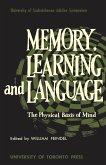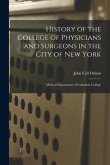Physiology concepts are evaluated to interpret homeopathic laws and principles. It helps to understand the relation between consciousness and body metabolism. It will help medical students to understand pathophysiology of disease as well as homeopathic remedy relationship. In this book we have elaborated coherent knowledge depicted in ancient ayurvedic scriptures. A comprehensive homeopathic remedy relationship, with respect to autonomic nervous system activity. The five elements theory forms the basis of understanding the fundamental principles of life and health. These elements, known as Pancha Mahabhutas, are considered the building blocks of the universe and are believed to exist in all living and non-living entities. The five elements are: Earth (Prithvi): Earth represents stability, solidity, and structure. It provides the foundation for all forms of matter and is associated with qualities such as heaviness, density, and groundedness. Water (Jala): Water symbolizes fluidity, cohesion, and adaptability. It is essential for nourishment, lubrication, and maintaining the balance of bodily fluids. Water is associated with qualities like coolness, moistness, and softness. Fire (Agni): Fire embodies transformation, digestion, and metabolism. It represents the energy and transformative processes within the body and mind. Fire is associated with qualities like heat, light, and sharpness. Air (Vayu): Air signifies movement, expansion, and circulation. It governs the flow of energy, breath, and thoughts in the body and mind. Air is associated with qualities such as lightness, dryness, and movement. Ether or Space (Akasha): Ether represents space, expansion, and openness. It provides the medium for all other elements to exist and interact. Ether is associated with qualities like emptiness, vastness, and potential. Every individual has a unique combination of these elements, known as their Prakriti or constitutional type. Imbalances or disturbances in these elements can lead to physical or mental health issues. Homeopathy treatments to restore the balance of these elements with the help of diet, lifestyle modifications is explained in this book. Understanding the interplay of these five elements helps Homeopathic practitioners diagnose and treat ailments by restoring harmony and balance to an individual's body, mind, and vital force. Physiology concepts are evaluated to interpret homeopathic laws and principles. It helps to understand the relation between consciousness and body metabolism. It will help medical students to understand pathophysiology of disease as well as homeopathic remedy relationship. In this book we have elaborated coherent knowledge depicted in ancient ayurvedic scriptures. A comprehensive homeopathic remedy relationship, with respect to autonomic nervous system activity. Five Elements - Homeopathy Linking to Disease Pathophysiology Author: Dr Govindsing Devising Girase








